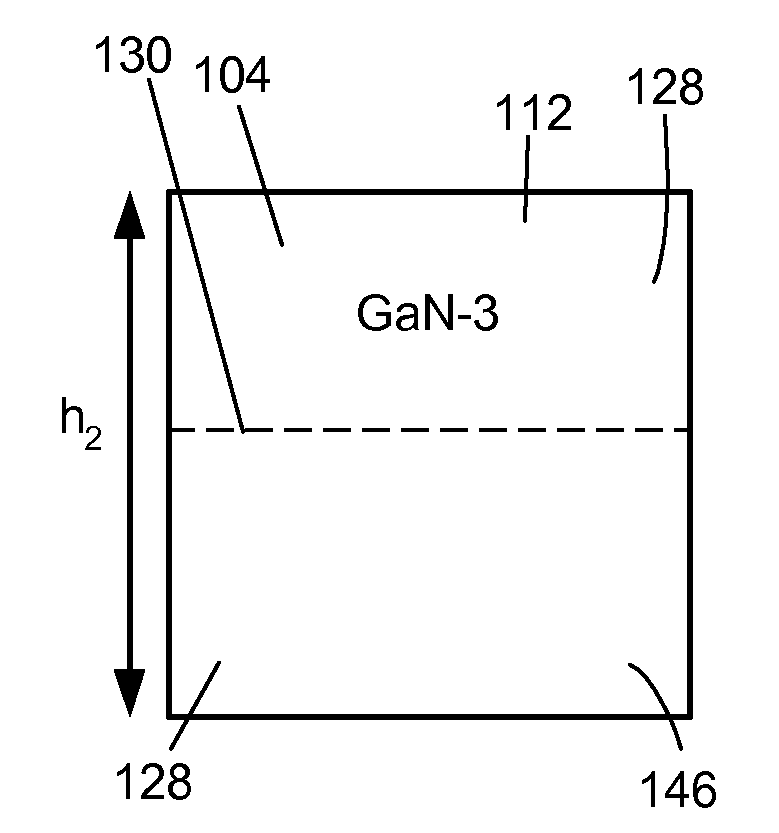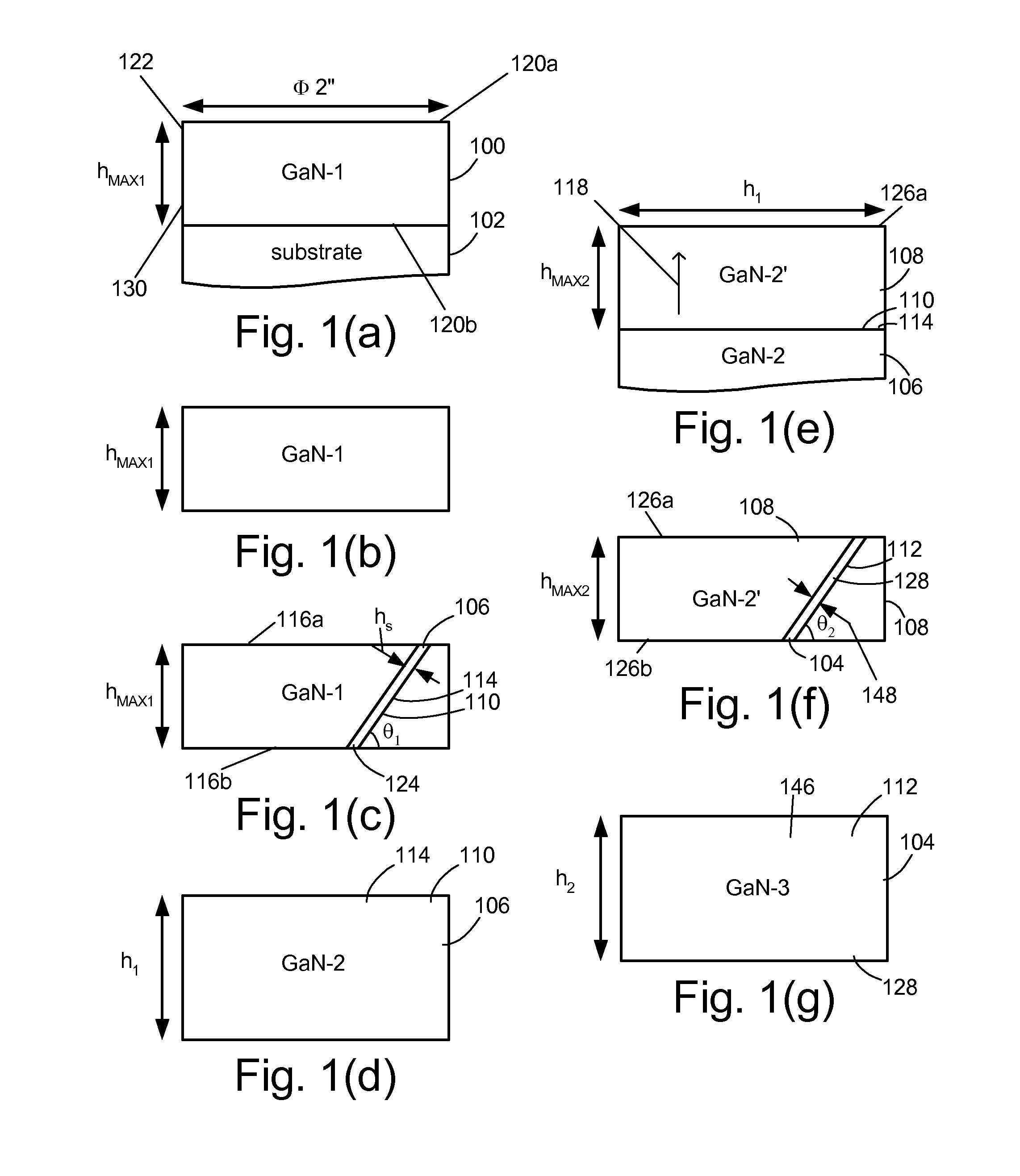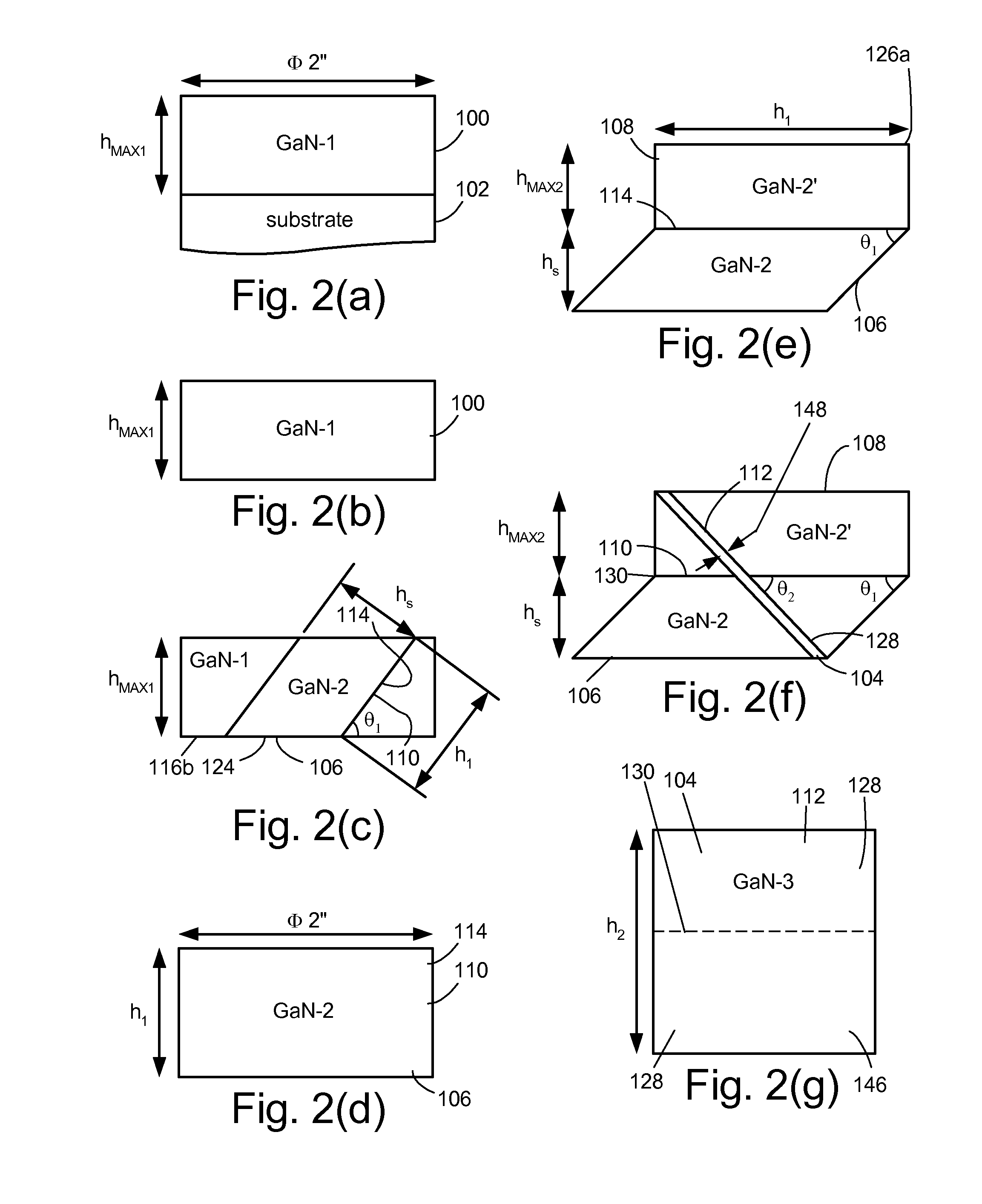Method for increasing the area of non-polar and semi-polar nitride substrates
- Summary
- Abstract
- Description
- Claims
- Application Information
AI Technical Summary
Benefits of technology
Problems solved by technology
Method used
Image
Examples
example 1
[0037]FIGS. 1(a)-(g) illustrate the process steps according to a preferred embodiment of the present invention. These process steps comprise the following:
[0038]1. Thick c-plane GaN growth (GaN-1) 100, to a thickness of hMAX1, on a substrate 102, as shown in FIG. 1(a), wherein Φ is the 2 inch diameter of the GaN-1 wafer 100.
[0039]2. Substrate 102 removal, leaving a thickness hMAX1 of c-plane GaN-1 100, as shown in FIG. 1(b).
[0040]3. Slicing a film 124 out of the c-plane GaN-1 100 along a semipolar plane 110 and at an angle θ1, as shown in FIG. 1(c), to form a sliced semipolar substrate GaN-2 106 having a surface 114 which is a semipolar plane 110 of width h1=hMAX1 / sin θ1, as shown by FIG. 1(d) which is the top view of the sliced semipolar substrate GaN-2 106.
[0041]4. Growing a thickness hMAX2 of semipolar GaN on the surface 114 of GaN-2 106 to form a semipolar growth GaN-2′108 (i.e. growth in a semipolar direction 118 to achieve top surface 126a and bottom surface 126b of the GaN 10...
example 2
[0045]FIGS. 2(a)-(g) also illustrate the process steps according to a preferred embodiment of the present invention. These process steps comprise the following:
[0046]1. Thick c-plane GaN growth (GaN-1) 100, to a thickness of hMAX1, on a substrate 102, as shown in FIG. 2(a).
[0047]2. Substrate 102 removal, leaving a thickness hMAX1 of c-plane GaN-1 100, as shown in FIG. 2(b).
[0048]3. Slicing a film 124 out of the c-plane GaN-1 100 along a semipolar plane 110 at an angle θ1, as shown in FIG. 2(c), to form a sliced semipolar substrate GaN-2 106 having a surface 114 that is a semipolar plane 110 of width h1=hMAX1 / sin θ1, as shown in FIG. 2(d), which is a top view of the sliced semipolar substrate GaN-2 106. The sliced semipolar substrate GaN-2 106 has a height hS.
[0049]4. Growing a thickness hMAX2 of semipolar GaN on the surface 114 (which is a semipolar plane 110) of GaN-2 106 to form a semipolar growth GaN-2′108 (growth along a semipolar direction 118 to achieve top surface 126a which ...
PUM
 Login to View More
Login to View More Abstract
Description
Claims
Application Information
 Login to View More
Login to View More - R&D
- Intellectual Property
- Life Sciences
- Materials
- Tech Scout
- Unparalleled Data Quality
- Higher Quality Content
- 60% Fewer Hallucinations
Browse by: Latest US Patents, China's latest patents, Technical Efficacy Thesaurus, Application Domain, Technology Topic, Popular Technical Reports.
© 2025 PatSnap. All rights reserved.Legal|Privacy policy|Modern Slavery Act Transparency Statement|Sitemap|About US| Contact US: help@patsnap.com



